make money with food photography
If you have always dreamed of being able to stay home with your kids and still help your family, YOU CAN as a food photographer for bloggers.
Free video training!

Aug 9, 2023
What Kind Of Camera Do I Need For Food Photography?
Quick disclosure: This page contains affiliate links which means we may receive a commission when you use our link.
Have you ever picked up a professional camera before? Or do you have limited experience with fancy cameras beyond putting them on “automatic” and taking pictures? Then this blog is for you! We are here to help you figure out what food photography camera you need while also helping you learn some of the language of photography!
Now, you might feel intimated already, and that’s okay. We are going to walk you through getting to know your camera step-by-step. And once you get to know and understand your camera better—its qualities and limitations—not only will you know how to purchase the best camera for you, but you’ll become a more confident photographer.
Let’s get started!
What Type of Food Photography Cameras Are Available?
First, we must discuss the different types of food photography cameras available. There are so many kinds that it can be challenging to know where to start.
You’ve probably heard of top brands like Nikon and Canon. Then there are Sony, Panasonic, and dozens of brands in between. And within each brand, dozens of different makes and models are available at every price point.
Want to spend $10,000 on a camera? You can. Only have a few hundred dollars? There’s a camera for you, too.
But beyond various brands—most of our students shoot on a Canon—there are a few more qualities to keep in mind:
- DSLR VS. Mirrorless
- Crop Sensor VS. Full-Frame
- Old VS New
- # of Megapixels
So, what is the best camera for food photography and what should you be looking for? We’ll dive into it.
Are DSLR or Mirrorless Cameras Best For Food Photography?
DSLR stands for: Digits Single Lens Reflex. A mirror inside the camera captures the image and reflects it up to an optical viewfinder.
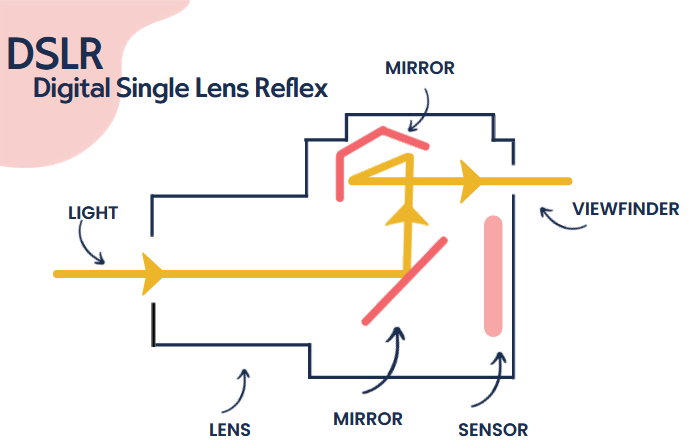
Mirrorless cameras are exactly what they sound like. They do not have a mirror to reflect the image. Instead, they use an electronic sensor to reflect images up the electronic viewfinder.
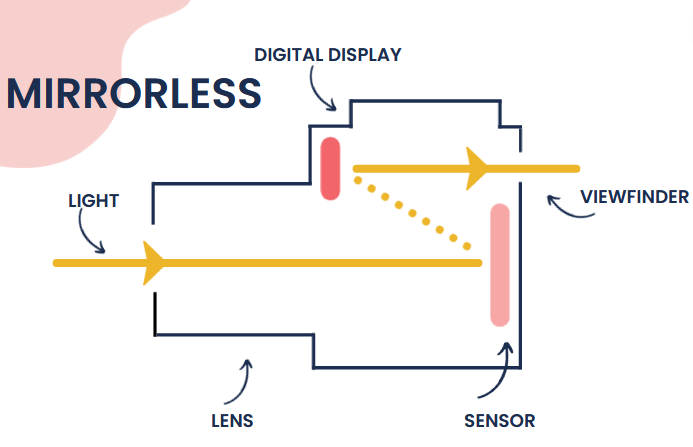
So, what does all this mean when finding the best camera for food photography?
Mirrorless cameras are newer. They hit the market a few years ago and quickly became a favorite among photographers because you can still use interchangeable lenses like a DSLR, but the electronic viewfinder offers more.
For example, in a DSLR camera, the optical viewfinder only offers an overlay of the focal point for photo composition. In a Mirrorless camera, the electronic viewfinder shows focal points and displays white balance and exposure—a truly awesome and helpful feature.
Here are a few other key differences to remember:
- Mirrorless cameras are much lighter than DSLR cameras.
- DSLR cameras are louder due to the mechanical shutter (you can hear the difference).
- Mirrorless cameras offer far more focal points (almost unlimited) compared to a DSLR
- DSLR has greater lens availability than the newer Mirrorless models (but adapters allow Mirrorless users to take advantage of DSLR lenses as needed)
- DLSR is more affordable because it has been around longer
DSLR VS. Mirrorless Cameras: At a Glance
| DSLR Cameras | Mirrorless Cameras |
| Optical Viewfinder | Electronic Viewfinder |
| Mechanical Shutter | Electronic Shutter |
| Slower Shooting Speed, Louder, and Heavier | Faster Shooting Speed, Quieter, and Lighter |
| Limited Focal Points (i.e., 61) | Unlimited Focal Points (i.e., 6,000) |
| Greater Lens Availability | Fewer Lenses (adapters for DSLR lenses) |
| More Affordable | More Expensive |
| Long-Lasting Battery | Shorter Battery Life |
| WINNER!! |
Overall, there are consistently more pros to a Mirrorless camera, making it the best food photography camera if you start from scratch. But if you already have a DSLR camera, it can still take high-quality images, and that’s what matters!
Should I Get a Crop Sensor or Full-Frame Camera?
Within DSLR and Mirrorless cameras are also Crop Sensor and Full-Frame cameras. What do these terms mean, and do they really make a difference?
First, it’s essential to know that all digital cameras have sensors. It’s a piece of hardware within every camera that captures light and converts it into signals, which result in an image. Basically, the sensor gathers information from millions of light-sensitive spots through the lens and records it. That’s what you end up seeing as a picture.
So, what’s a Crop Sensor camera VS. a Full-Frame camera?
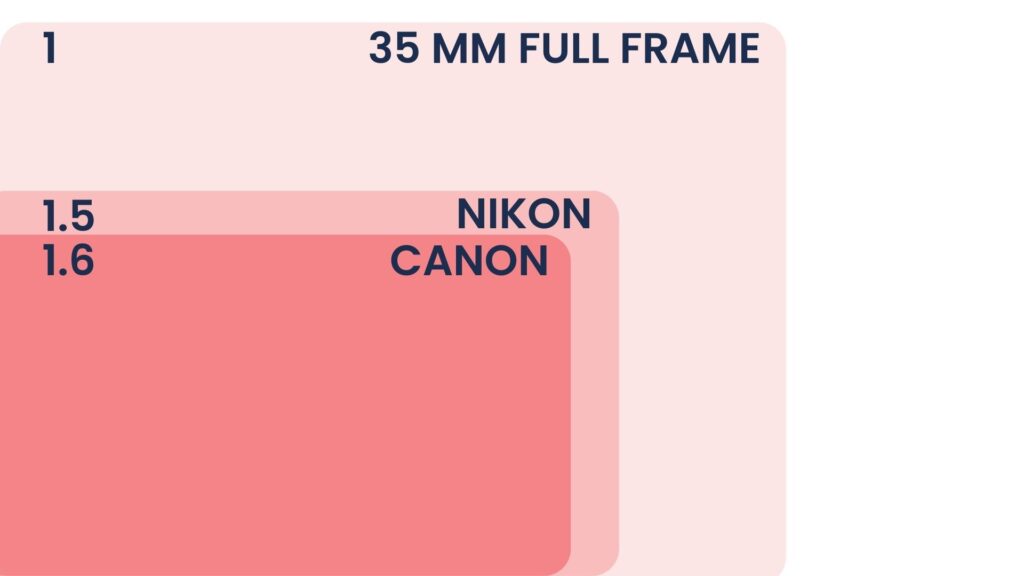
Crop Sensor cameras are often referred to as “budget” cameras. They tend to be entry-level cameras because they have a much smaller sensor—hence the name Crop Sensor. The amount of crop varies between cameras, but it’s always smaller than Full-Frame.
Full-Frame cameras have a sensor that is the same physical size as a 35mm film camera. These cameras are referred to as “mid-level” or professional cameras. Because they have the full sensor size, they can take much higher quality photos no matter the distance shot or the lens used.
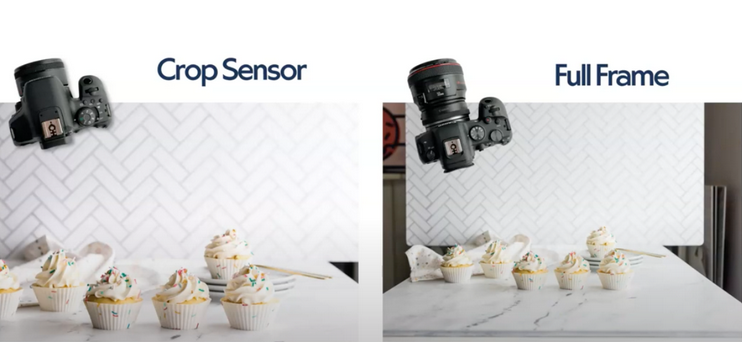
Crop Sensor VS. Full-Frame Cameras: At a Glance
| Crop Sensor Cameras | Full-Frame Cameras |
| Budget or Entry-Level Camera | Mid-Level or Professional Camera |
| Smaller Sensor | Full 35mm Sensor |
| Lower-Quality White Balance with Duller Colors | Better White Balance with Fuller and Brighter Colors |
| Slower and More Cumbersome Shooting Flow | Quick Access Buttons for Better Shooting Flow |
| Fewer Focal Points (small sensor) | More Focal Points (larger sensor) |
| Lighter | Heavier |
| Quick to Outgrow | Long-Lasting Quality |
| WINNER!! |
In the end, both cameras serve a purpose. If you are a beginner and do not have much money to spend on a camera, a Crop Sensor camera is a great starter camera that can produce decent work. You’ll just want to always shoot in the best light possible and set a custom white balance for the best outcome. But you will eventually outgrow the Crop Sensor and want to upgrade.
A Full-Frame sensor camera is better overall. It handles low light, offers more focal points, and produces higher-quality images. However, these cameras are more expensive, so that’s something to consider. But you won’t have to upgrade because you can grow into it instead of out of it.
Check out this article from Studio Binder if you want more details on camera sensor size.
Can I Use my Old Camera for Food Photography or Do I Need Something New?
What can you do if you don’t want to upgrade your camera or can’t afford to? Can you use your old camera for food photography, or do you have to buy something new? Honestly, it’s entirely up to you. The major difference between older and newer cameras is the technology.
Sensors on new cameras have drastically improved. Even if you have the same megapixels and sensor size as the newest cameras, the technological step back will mean that it won’t perform quite as well. With a more recent camera, you’ll see an overall improvement in operation and image quality, particularly noticeable in low-light settings. There may also be less “graininess” in a new camera.
But old vs. new is mostly a matter of preference. You can still take amazing photos with an older camera, and many of our students use what they have rather than spend the money to upgrade.
And, if a few years down the road, after you’ve been successful in food photography, you decide you want to upgrade your camera, you can do so then.
How Important Are My Camera’s Megapixels for Image Quality?
Finally, let’s talk megapixels. How important are the number of megapixels for image quality? Let’s define what a pixel is.
A pixel is a measurement of visual information—the smallest unit of measurement. One megapixel is approximately 1,000,000 pixels. So, a camera with 20MP has 20,000,000 pixels within the final image. What does this mean in actuality? The more megapixels, the more detail that is captured in your image. Thus, the higher the megapixel number, the more details. Right?
It’s not quite that simple. While pixels are essential, they aren’t everything. Other factors involved include pixel pitch, pixel density (the number of pixels in one square cm), pixel size, and pixel area (the area which the pixels cover). Even the sensor size, which we mentioned earlier, can affect the result and quality of your megapixels.
For example, the larger the pixel, the more light it can hold. Thus, if your camera has larger pixels it will operate better in low-light situations and thus produce better pictures. So, what’s the bottom line?
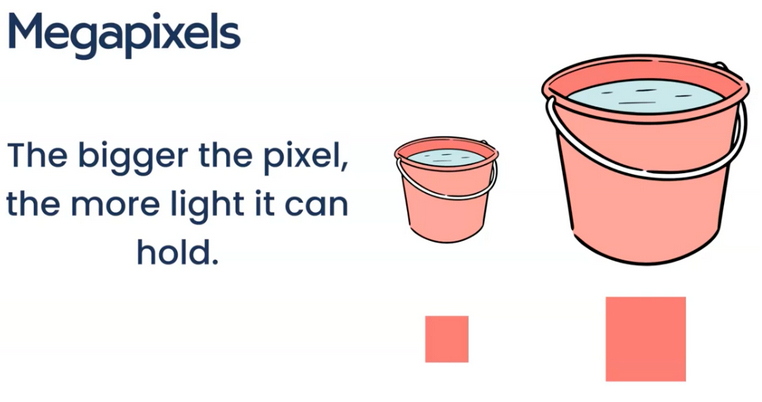
Megapixels for Food Photography: At a Glance
While megapixels certainly play an important role, they might not be as essential as you think. Megapixels are required mostly for images that will be blown up to immense sizes (12 x 18 or larger), or cropped close and zoomed to a particular area. But since food photography is mostly online, you don’t really have to worry about this.
You can definitely still crop your images for online work even with lower megapixels, as long as you don’t crop them to the point where you start losing detail. If you want to dive deep into megapixels for your camera, we highly recommend checking out this article from Photography Life. It goes into a ton of detail to help you out.
What Now? What is the Best Camera For Food Photography?
Okay, so what’s the final verdict? What is the “Best Camera for Food Photography?” We wish we could just sit here and give you a make and model to go buy or say, “You must buy a camera with 20MP or more to do this well.” But that’s not how this works. There are so many factors that go into choosing the best camera for you. It’s personal.
What we can do is say that if you’re looking for a camera, start within your budget. From there, here are a few of our favorite options to get you started:
- Canon t8i (Crop DSLR)
- Canon R7 (Crop Mirrorless)
- Canon R6 (Full-Frame Mirrorless)
- Canon 5D IV (Full-Frame DSLR)
- Nikon D5600 (Crop DSLR)
- Nikon D850 (Full-Frame DSLR)
- Nikon Z 6II (Full Frame Mirrorless)
No matter what camera you end up choosing, just remember: its guide is your best friend! Keep the camera guide with you always, and don’t lose it. And if you don’t have the guide anymore, don’t worry. You can usually download it online.
We hope this food photography camera guide has been helpful. See more of our recommendations for camera gear, accessories and MORE in our Amazon Storefront.

What if you could turn your passion for cooking and photography into a dream career?
Pretty Focused – Food Blog Photography helps aspiring food photographers get hired. Whether you’re looking to make a full-time income or just supplemental income, there is something for everyone inside our course. Plus, with the support of a community and top-notch coaches, as well as our Buyers Club that connects you with clients, you’ll have everything you need to succeed.
So if you’re looking for a new career or just want to explore the possibilities of working from home as a food photographer for bloggers, join the Pretty Focused Roadmap and learn if this is right for you.
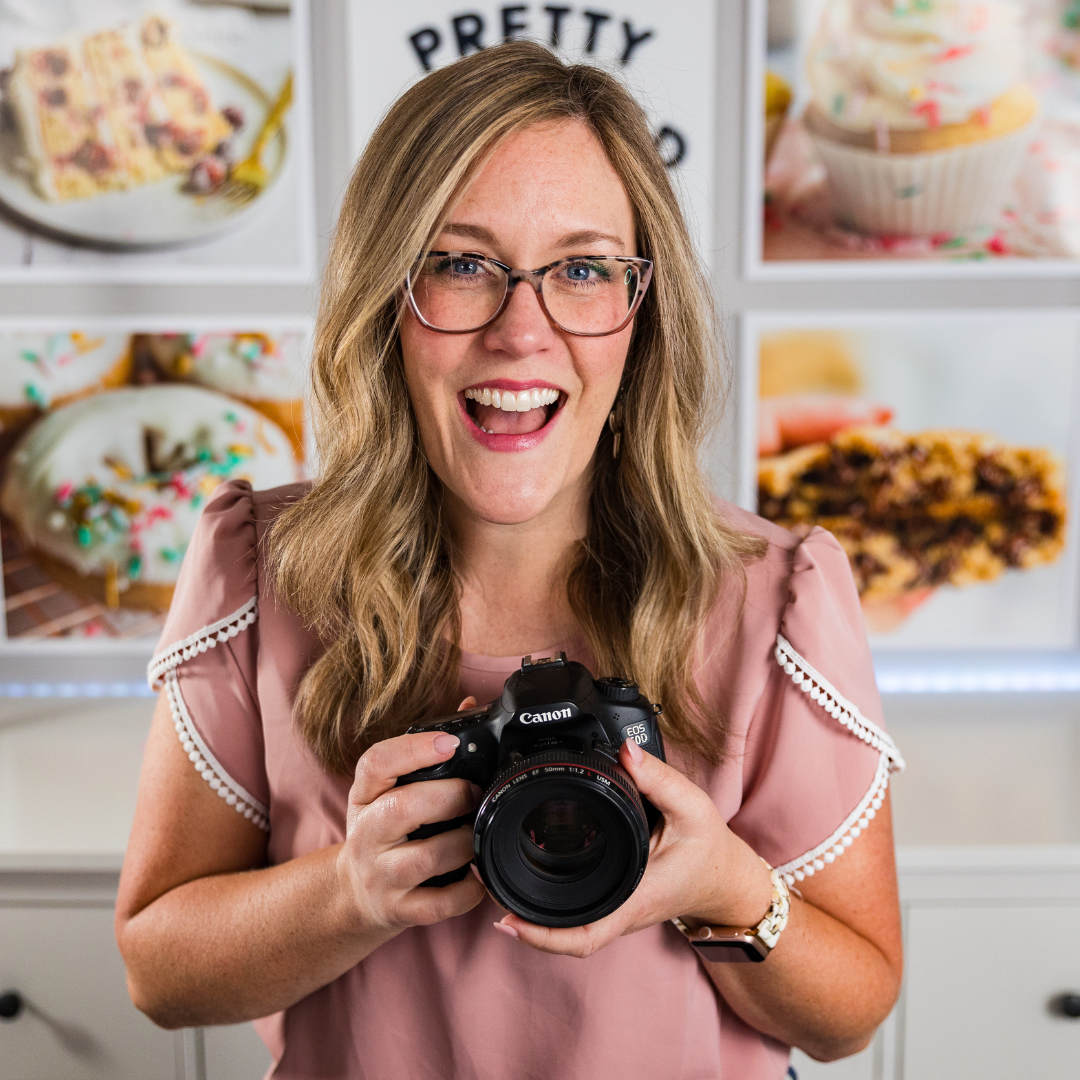
Pretty Focused Founder | I’m a wife, educator, photographer and homeschool mom. I created my own dream job working from home and now teach others how to turn their passions into creative businesses.
PRIVACY / disclaimer / accessibility / Code of conduct / Earnings Disclaimer / Be an Affiliate
melodee lynn photography llc - Copyright 2023
www. PRETTYFOCUSED.COM / PSALM 90:17
melodee lynn photography llc
Copyright 2023
PRETTYFOCUSED.COM
PRIVACY / disclaimer / accessibility Code of conduct / Earnings Disclaimer
Be an Affiliate / PSALM 90:17